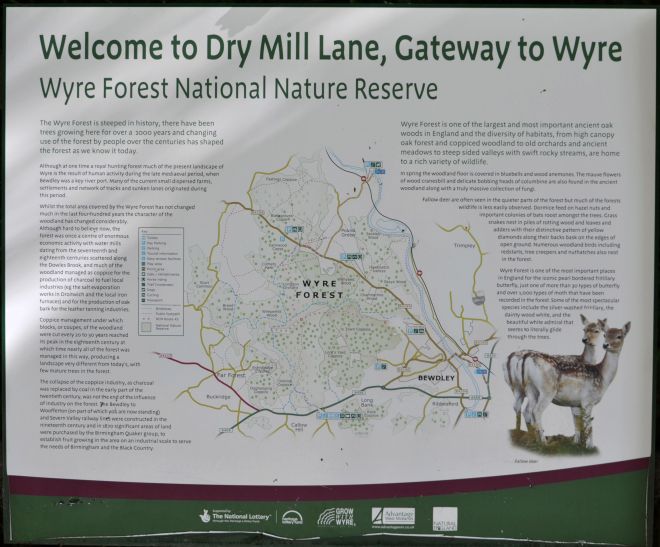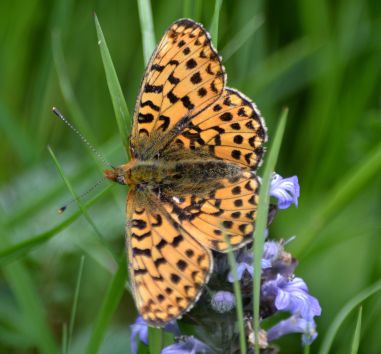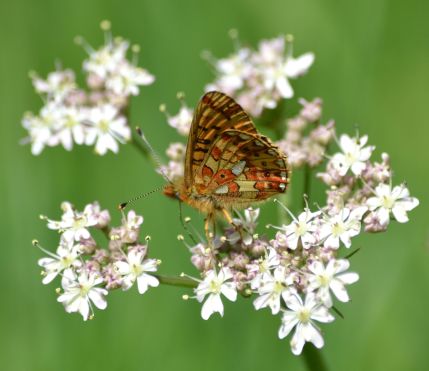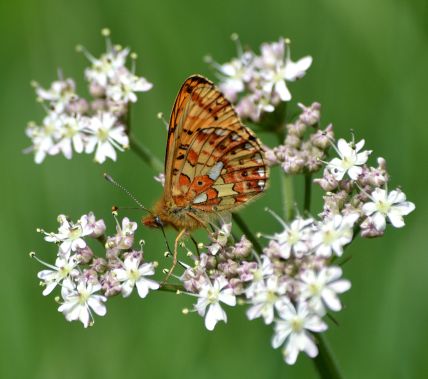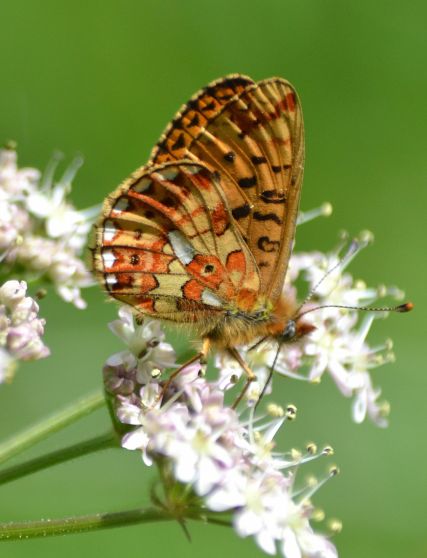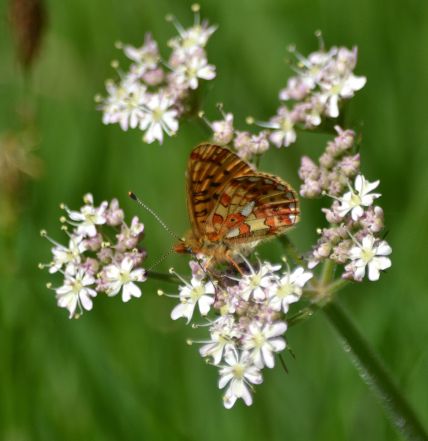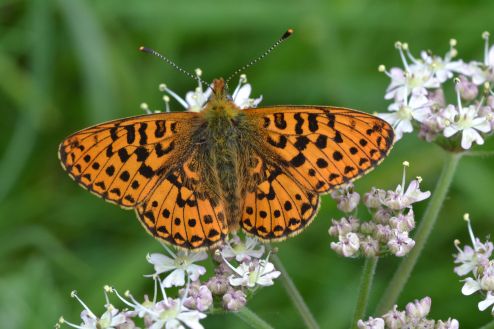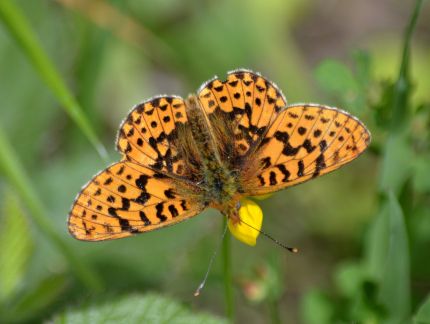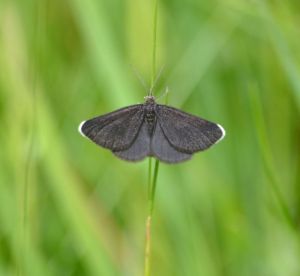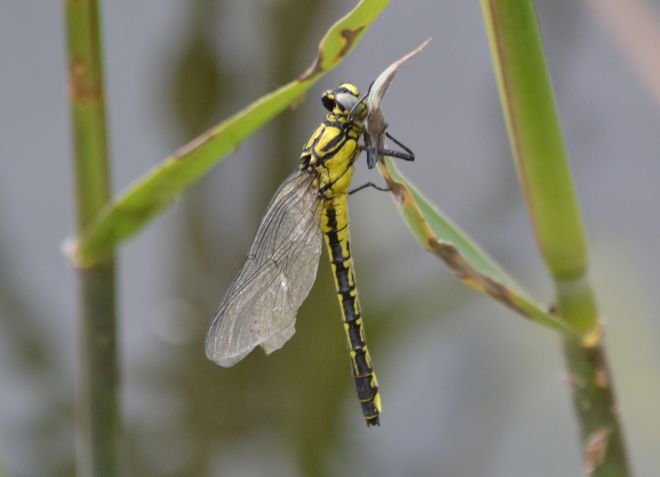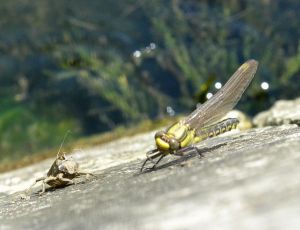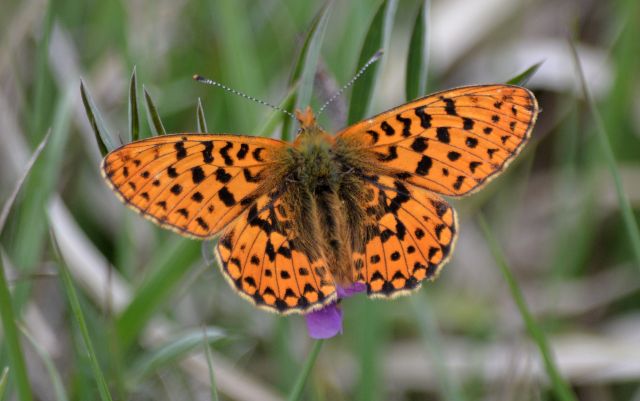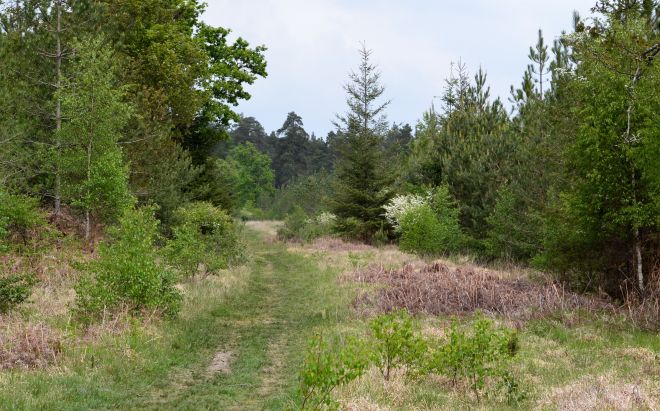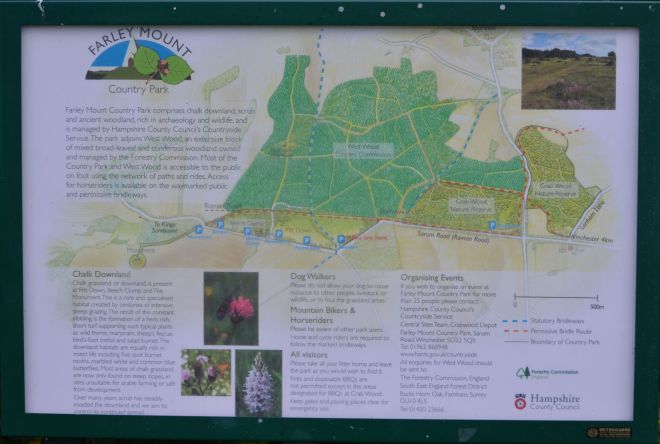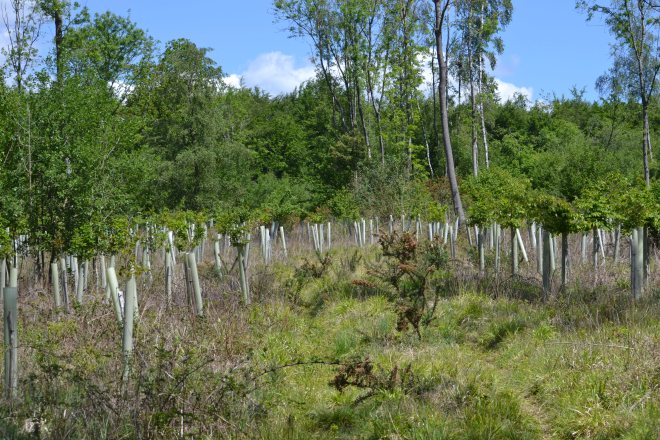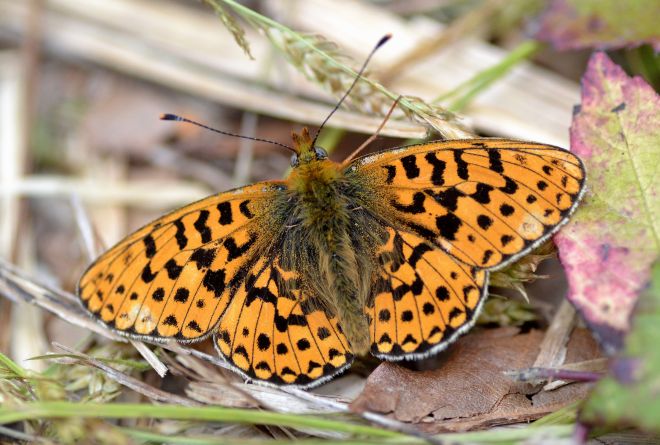Circumstances on this bank holiday Monday led me to visit Bentley Wood for the first time in four years to re-connect with one of its specialities. In so doing, almost as a kind of insurance policy against not making it back to Wyre Forest or not seeing many Small Pearl-bordered Fritillary if I did, my picture collection became boosted by some more than acceptable results.
Over the weekend a Squacco Heron had been present in the Meon valley between the Solent village of Titchfield and the nature reserve to its south. I have seen that bird often abroad but still need it for my British list, and so opted to go down this morning then drop into Bentley Wood on my way home. As things transpired there was no sign by 9:00 am but by then I had the urge to just get out somewhere. So I decided to head south to the A34 / A303 intersection then check the news on RBA. That was still negative and so it was to Bentley Wood I headed.
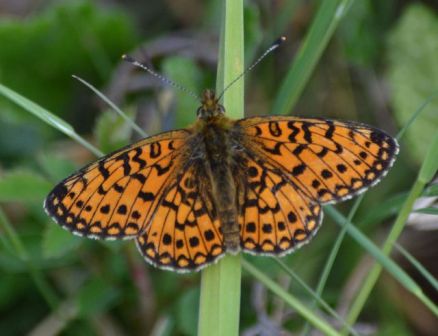
Small Pearl-bordered Fritillary
Both Pearl species fly here in a part of the woodland known as the “eastern clearing” that is managed to cater for their needs. I had read this is a butterfly site in decline through difficulty in maintaining the preferred habitat, but upon my arrival mid-morning things looked much as they always had done on previous visits between 2011 and 2015 (see here). I first tried to seek out the spots where I had last observed SPBF here but was told they were being seen at the nearest end of the clearing to the on-site car parking area (SU 25901 29229 – see here).
The Pearl-bordered Fritillary (pictured below, left) still on the wing here were all rather more faded than those I had encountered further north and west in Wyre Forest two days earlier, suggesting there might indeed be minor differences in flight periods between the two sites. And the Small Pearl-bordered Fritillary (below right) amongst them once again stood out by their richer brown tones and very apparent freshness. In every top-side SPBF picture I took today the diagnostic 730 marking beneath the leading edge of the left hand fore-wing is quite obvious, and the same pattern can be seen in reverse on the right hand side. The broader black outer edging and dark tip to the fore-wings are other distinguishing features.
As always at Bentley Wood there was plenty of company, and while this can assist in locating butterflies the inevitable competition for space around them most often makes gaining pictures of the quality I seek more difficult. Then there is the distraction of wondering what other observers are looking at and if they might be finding more than myself. All of this serves to underline why this was not my original site of choice this year and why generally I prefer to do my butterflying alone.
Eventually I did achieve better under-wing studies than two days ago by leaning in on a specimen that someone else had found. These (below) show clearly the diagnostic black chevrons that enclose each silver border pearl, the several pearls in the centre of each wing and the larger black dot than PBF has. The two butterflies really are quite different.
Small Pearls are said to favour damper, grassier areas than Pearls, which was certainly true of the brook side meadows at Wyre Forest, but here both species appeared to be flying together. My impression was there were just a few SPBF circuiting a wide area and locating them was seldom easy. This far into the season the eastern clearing habitat, which closely resembled that at Rewell Wood and Parkhill Inclosure, was plainly suffering from all the footfall it endures.
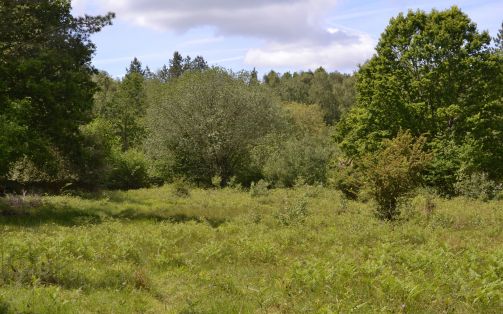
The eastern enclosure at Bentley Wood
In the early afternoon the number of people dwindled until in more sustained sunny intervals there were just four of us left. One couple seemed to be finding a lot more Small Pearls than I was, though they were less concerned than myself about keeping to already trodden areas and I could not tell how much clutter and light and shadow their many frames might contain. This was becoming frustrating so I decided to move on, but glancing back there they were again in close contact with another butterfly. So I walked across one last time and in doing so self-found a nicely posed, pristine SPBF basking open-winged in the sun on a thick blade of grass.
This (above) is the same individual whose portrait appears at the head of this post. Success at last and all the discontent drained out of me. I now had three good sequences of pictures and was satisfied with my day’s efforts. There did appear to be more SPBF on the wing by this time and I suppose it was possible that some might be emerging in the warmer conditions. But I resisted the temptation to continue jostling for access with my busier companions and quit while I was ahead. It was indeed now time to depart.
My sightings here meant I had observed and taken pictures of Pearl-bordered Fritillary at five different sites in May of this year. As a bonus, before coming across either Pearl species today a possibly newly hatched Marsh Fritillary was pointed out to me. I had heard over the years that a few fly here but this was the first I had seen in Bentley Wood. The under-wing macro studies in the sequence below are possibly the best I have ever attained. Later in the morning when it was relocated this individual attracted some attention.
This “threatened” species appears to be expanding its range in recent years. Over the weekend three were even recorded on the South Oxon Downs. Allowing for the possibility of them being releases this seems like quite a turn up, since MF is thought to have been extinct in my home county since 1996. So I will keep track of developments here with interest.
Bentley Wood holds more than 35 species of butterfly, including every woodland species occuring in southern central England. This importance for lepidoptera is recognised by the site’s SSSI designation. As well as the currently declining Pearl populations, other stand-out resident species here are Purple Emperor, White Admiral, Purple and White-letter Hairstreak and small numbers of Duke of Burgundy; while the above mentioned Marsh Fritillary are also holding on. For a site guide see here. Incidentally the Squacco Heron at Titchfield that had prompted this visit today was not reported throughout.












